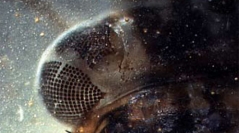

 Geodiversitas
31 (1) - Pages 73-98
Geodiversitas
31 (1) - Pages 73-98The aim of the present paper is to evaluate the taxonomic composition and diversity of the richest fossil cockroach assemblage from Mesozoic amber and to compare them with those of the Mesozoic sedimentary record. The studied assemblage originated from the Late Albian (Early Cretaceous) deposit of Archingeay-Les Nouillers in southwestern France. Phase-contrast X-ray synchrotron imaging, a technique recently developed for analysing amber inclusions, is used here for the first time to reconstruct very detailed views of two cockroach specimens fossilised in a piece of opaque amber. The Blattulidae Vishniakova, 1982, here represented by Batola nikolai n. gen., n. sp. and Globula lake n. gen., n. sp. were, analogically as in sedimentary record, dominant; Liberiblattinidae Vršanský, 2002, represented by Leptolythica vincenti n. gen., n. sp.; and Mesoblattinidae Handlirsch, 1906, represented by Sivis odpo n. gen., n. sp. were subdominant; the new family Eadiidae n. fam., with Eadia aidae n. gen., n. sp. occurs only in the present and Myanmar ambers; and a new, here not described family is yet only indigenous to this locality. Caloblattinidae Vršanský & Ansorge, 2000 are rare apparently due to their large size and thus low resin-burial potential, in spite of their fairly common occurrence in the Late Mesozoic assemblages of rock fossil. The present assemblage considerably differs from the standard conservative worldwide Early Cretaceous assemblages of imprint fossils. In spite of alternative taxonomic composition at generic level, however, and due to the particular burial conditions in amber, this association is of a comparable, rather low, specific diversity.
Insecta, fossil cockroaches, Blattida, Blattaria, Blattodea, Blattulidae, Mesoblattinidae, Liberiblattinidae, Eadiidae, Cretaceous amber, France, X-ray synchrotron, new family, new genera, new species